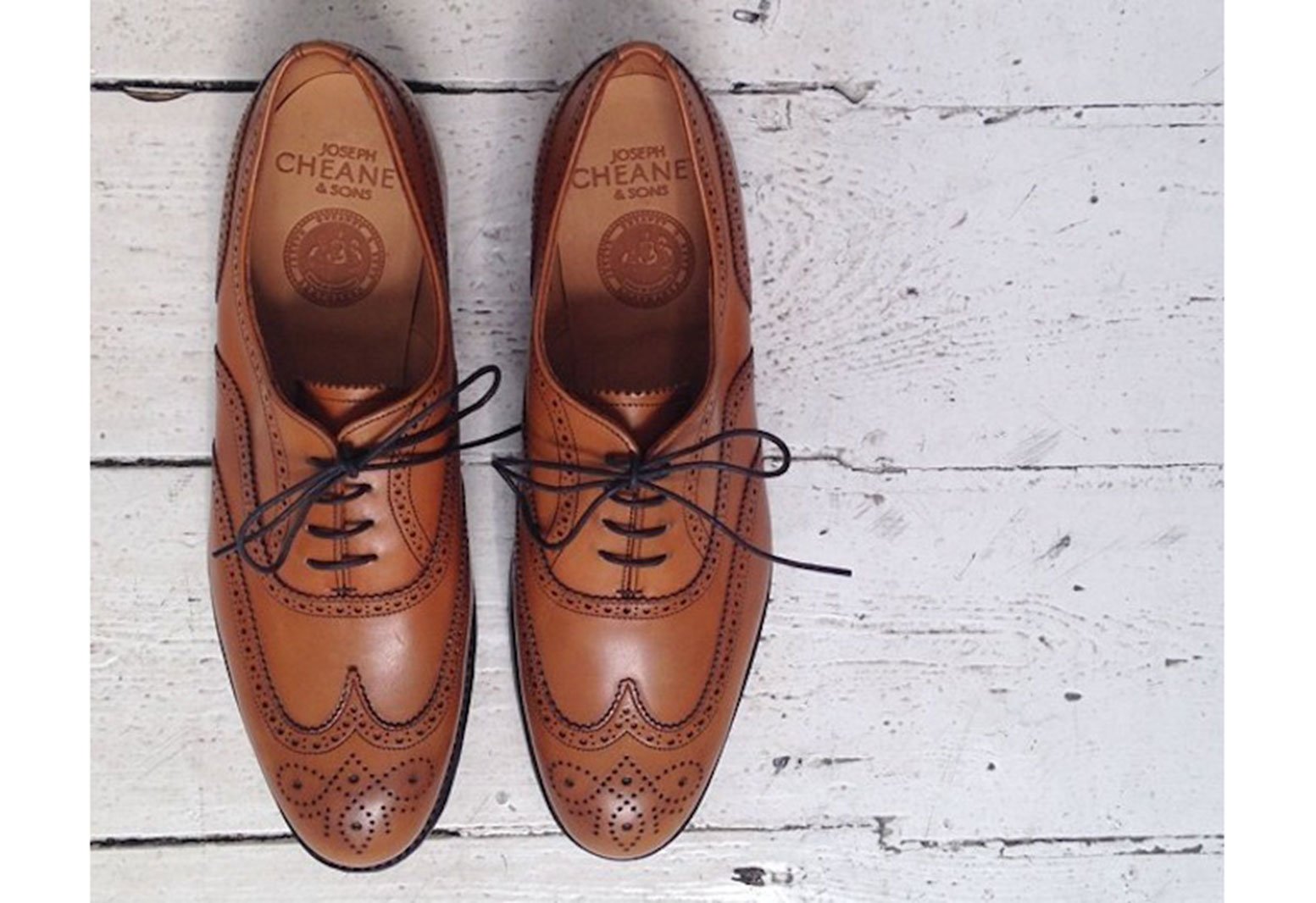
Andie Cusick
As a child, I loved polishing shoes. Every week I would help my dad by buffing his left shoe while he shined the right. I remember prising open tins of Kiwi wax polish; the mustard yellow colour of the polishing cloths; and a couple of well-used wooden brushes that fitted in the palms of my hands. The task instilled in me not only a sense of care for good shoes but pride in them, too.
By the time I started secondary school, Sunday nights staged a shoe ritual and I was no longer polishing my father's Church's but my own brown leather brogues. With a strict uniform policy at school, my choices were limited: penny loafers or flat lace-ups. I chose the latter with great consideration. What won out for me was something my father's shoes lacked: intricate detailing in the form of tiny, perforated holes.
Identified by distinctive patterns punched in the leather and serration to each visible edge, brogues (from the Gaelic word brg, meaning shoe) were created in the early 20th century as a men's walking shoe. Originally designed with larger, open holes to allow water to escape when striding through boggy terrain, they were not deemed appropriate for formal occasions, nor were they intended for women. But, aided by Hollywood stars including Katharine Hepburn, Marlene Dietrich and many more in recent years, today the brogue is a unisex classic.
Northamptonshire's shoe industry, which dates back to the 15th century, took note and women's brogues are now widely available. As Clive Parnell of heritage shoemakers Joseph Cheaney & Sons notes, The brogue has become finer and more elegant over the years.
For many years I abandoned formal blazers and wingtip shoes in favour of a little sartorial rebellion boy-jeans and old Converse or Birkenstocks. But recently, a less slouchy style increasingly appeals to me. I'll always elect for flat comfort over extra height, but that too is part of a brogue's charm for the more you wear them the more comfortable they become. Marcus Jaye, style writer and author of The Chic Geek's Fashion, Grooming & Style Guide For Men decrees shoes need to be comfortable as well as look good. A good men's shoe is something which is in proportion to the size of the foot and makes it look elegant and will last, once you've broken them in. Cheaney recommend breaking-in their shoes in dry conditions for the first few wears. With leather soles this is important it gets grit into the grain and hardens the sole giving longer life, explains Parnell.
Handmade in England, each pair of Cheaney brogues takes nine weeks to make, from selecting the calf-skin leather to placing in the box. This level of quality has not gone unnoticed. As traditional English style has come back into fashion, so too has the complementary footwear, says Jaye. English shoes, especially brogues, are usually Goodyear welted, which means they can be repaired over and over using the traditional construction. People have realised it's worth investing in an English pair, he adds.
Caring for handmade shoes is not only a necessity but also part of their charm and, for me, a nostalgic reminder of a father-daughter ritual. As the warm days recede, I've put away my Birkenstocks for a pair of lace-up, perforated, leather shoes. And I know just how to keep them shiny.
Click here to browse Toast's collection of shoes for women - including a selection of English brogues, monks and loafers. Click here to see our range for men.
Add a comment